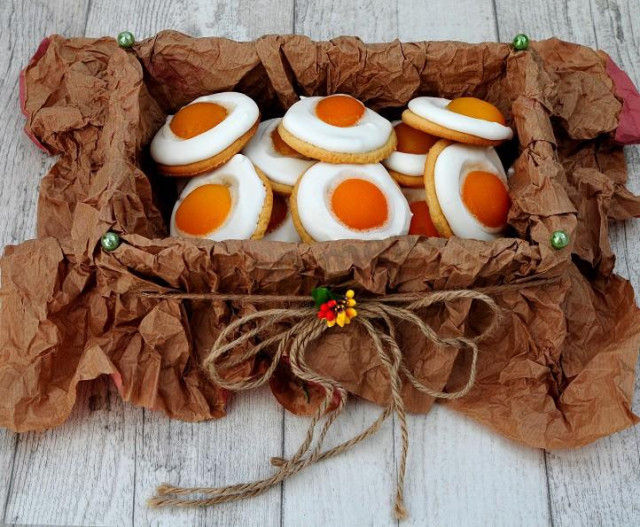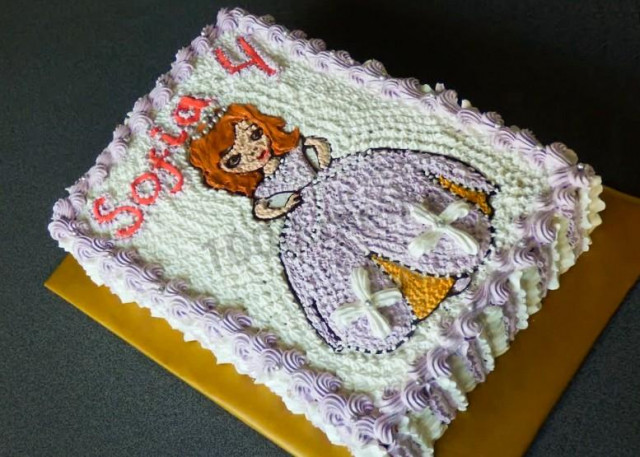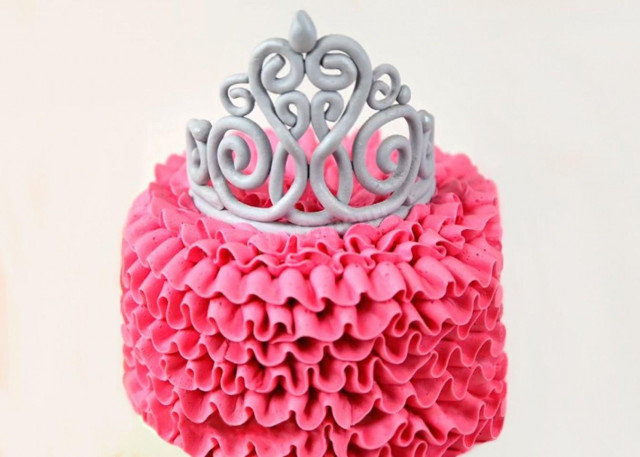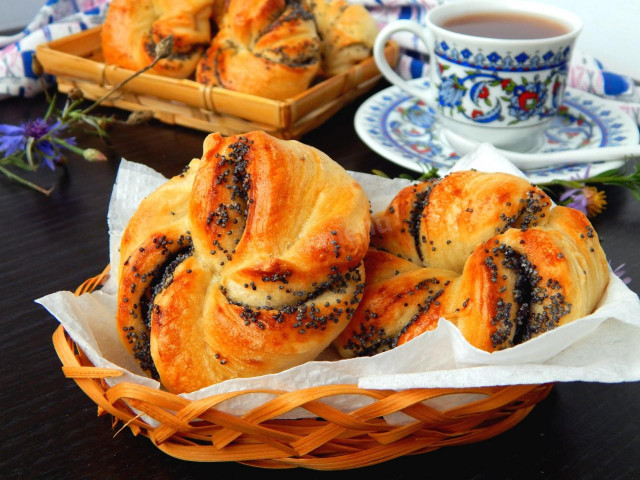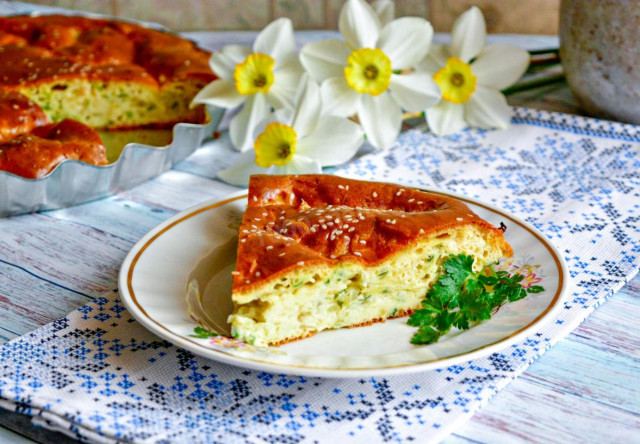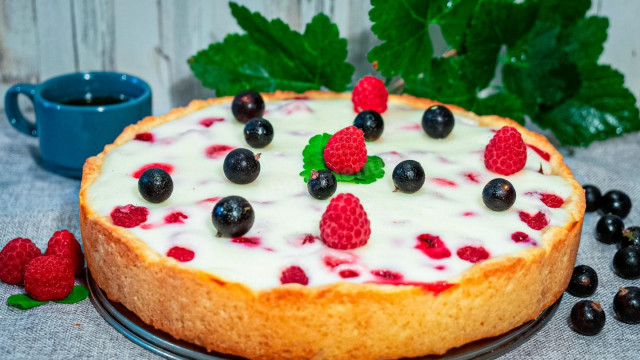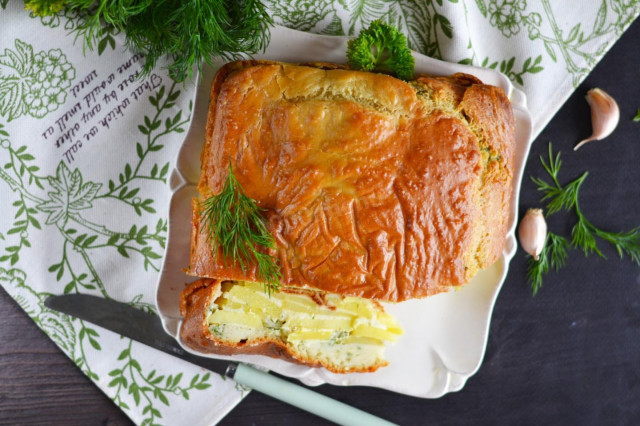Composition / ingredients
Step-by-step cooking
Step 1:
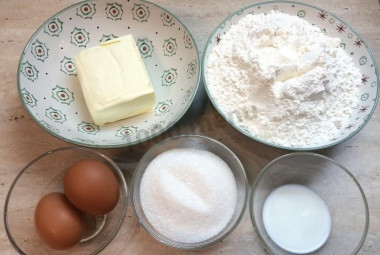
How to make Easter cookies with apricot? Prepare our ingredients.
Step 2:
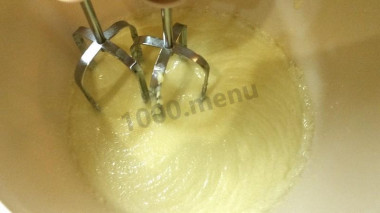
Soften the butter in the microwave, add sugar and start beating with a mixer. Add eggs and milk. Stir until smooth.
Step 3:
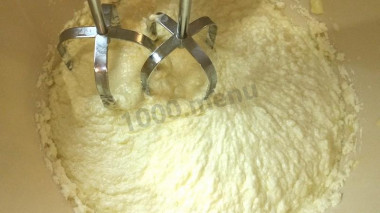
Start adding the sifted flour gradually.
Step 4:
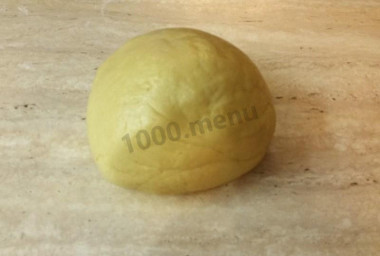
Knead the dough. It should turn out soft, elastic.
Step 5:
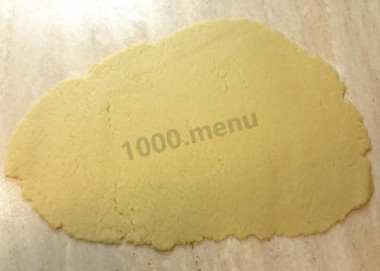
Roll out the layer.
Step 6:
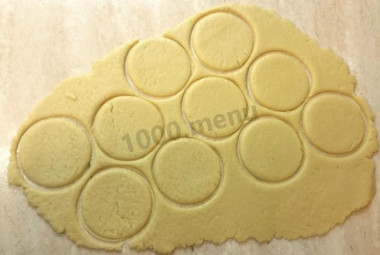
Use a glass to make mugs about 7 cm .
Step 7:
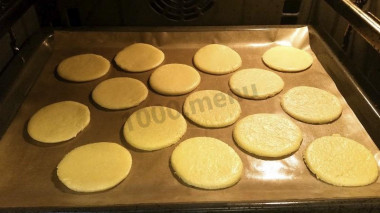
And send our bases to the oven for 20 minutes at 180 degrees.
Step 8:
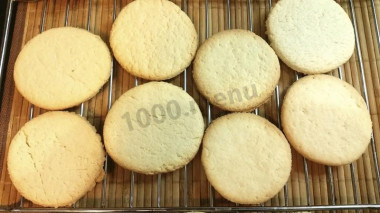
Remove the finished bases and allow to cool completely.
Step 9:
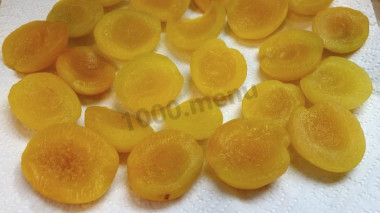
Take our apricots out of the jar and let them dry thoroughly. At this time, make the glaze. Whisk the whites, add half of the powdered sugar and lemon juice. Then whisk, gradually adding the remaining powder, bringing the glaze to the desired consistency.
Step 10:

I got about 35 basics.
Step 11:
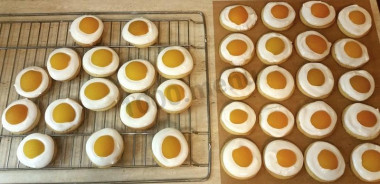
Cover our bases with the resulting glaze and put our apricots on top.
Step 12:
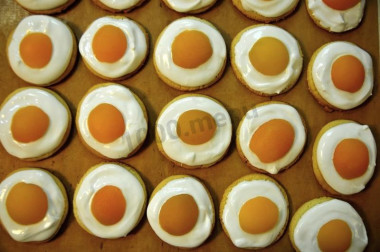
Leave overnight to dry the glaze.
Step 13:
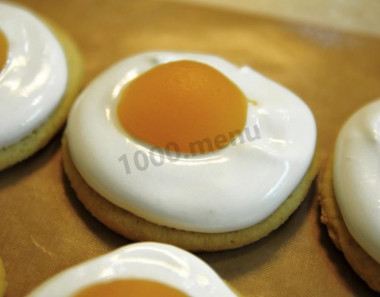
These are the beauties we get in the morning!
Step 14:
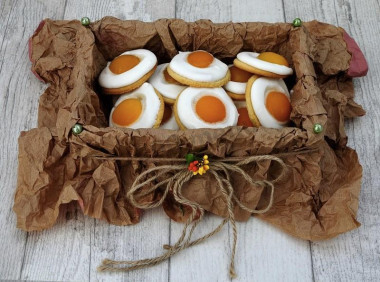
Going to church in the morning, we put our pies in a beautiful box.
A wonderful recipe for Easter day! I will be glad if you use this recipe. Happy holidays, dear forum members. Happy Easter!
Be prepared for the fact that you may need more or less flour than indicated in the recipe. Focus not on the amount of flour, but on the desired consistency of the dough. To avoid mistakes, read about flour and its properties!
Keep in mind that everyone's ovens are different. The temperature and cooking time may differ from those specified in the recipe. To make any baked dish successful, use useful information about the features of ovens !
Butter can be melted in the microwave or in a water bath.
How to melt butter in the microwave?
Cut the butter into small pieces and place it in a special container. To prevent the oil from splashing when heated, cover the oil vessel with a paper towel. The oil should be melted either at the lowest power or in defrosting mode. At first, five seconds will be enough. Next, if the butter has not melted yet, set it again for 5 seconds and start the microwave. Repeat the process several times until the desired result.
How to melt butter in a water bath?
You will need two containers of different diameters. Pour water into a large one and put it on the stove. Place the smaller container on top so that it is submerged in water by about half. Put the sliced butter into it. Under the influence of boiling water, the oil will begin to melt. Stir the oil slightly to speed up the process. As soon as the pieces of oil are completely dissolved, remove the container from the stove.
Caloric content of the products possible in the composition of the dish
- Whole cow's milk - 68 kcal/100g
- Milk 3.5% fat content - 64 kcal/100g
- Milk 3.2% fat content - 60 kcal/100g
- Milk 1.5% fat content - 47 kcal/100g
- Concentrated milk 7.5% fat content - 140 kcal/100g
- Milk 2.5% fat content - 54 kcal/100g
- Chicken egg - 157 kcal/100g
- Egg white - 45 kcal/100g
- Egg powder - 542 kcal/100g
- Egg yolk - 352 kcal/100g
- Ostrich egg - 118 kcal/100g
- Whole durum wheat flour fortified - 333 kcal/100g
- Whole durum wheat flour, universal - 364 kcal/100g
- Flour krupchatka - 348 kcal/100g
- Flour - 325 kcal/100g
- Granulated sugar - 398 kcal/100g
- Sugar - 398 kcal/100g
- Apricots - 46 kcal/100g
- Canned apricots - 50 kcal/100g
- Butter 82% - 734 kcal/100g
- Amateur unsalted butter - 709 kcal/100g
- Unsalted peasant butter - 661 kcal/100g
- Peasant salted butter - 652 kcal/100g
- Melted butter - 869 kcal/100g
- Lemon juice - 16 kcal/100g
- Powdered sugar - 374 kcal/100g
- Egg whites - 44 kcal/100g

